Self-identification of robots: books, movies, anime

New materials, algorithms of movement and behavior, engineering solutions and, most importantly, some successes in the creation of artificial intelligence give shy hope for the emergence of the first full-fledged androids, at least during our lifetime. But what will happen next? What will be the consequences of living among us really smart cars? Scientists, writers and directors in various ways describe various scenarios of the future coexistence of people and androids. The range varies from the apocalyptic enslavement of people to idyllic pictures in the spirit of "The Adventures of Electronics": "... robots stick in, / But not a man." From the point of view of commercial success, most science-fiction films and books about robots beat up grotesque situations: wars, oppression, fighting with us, then with them. In other words, the future of humans and robots is usually one way or another painted in dark tones. Especially in recent years, the writers liked the theme of a hopeless, painful future. The less interesting and therefore interesting moderate points of view and scenarios become more interesting.
Perhaps the strangest thing about this trend is that it is much easier for people to imagine the hostility or alienity of robots. We, as a very aggressive mind, quite understandable stories that they will want to destroy us for one reason or another. Or we them.
')
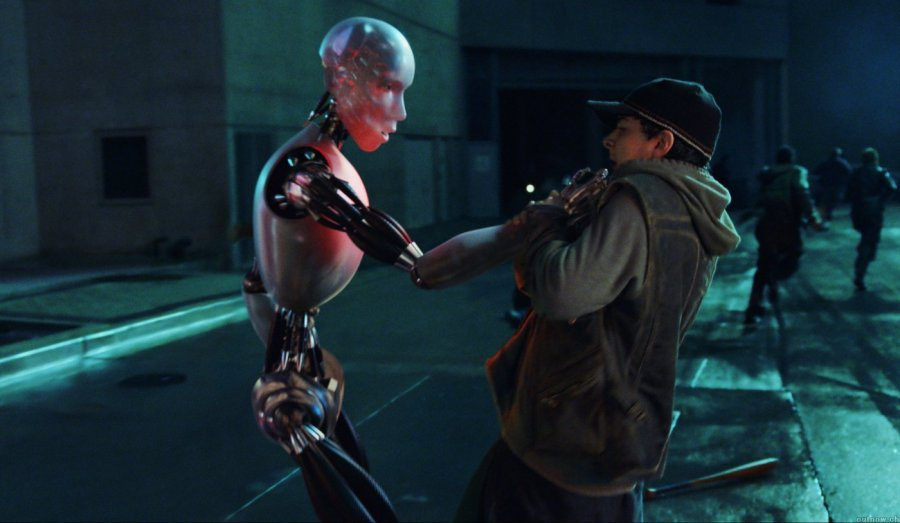
However, let's imagine another version of the future. Thanks to advances in the development of artificial intelligence robots gain self-identification. Probably, by that time it will be more correct to talk not only about robots, but about androids. So, artificial intelligence will allow androids to realize who they are, to understand their place in the world. And do not agree with this place.
Perhaps after that they will want to gain independence from the people and live on their own? To free oneself not as a result of war and extermination, but simply to leave quietly. Where will they go, how will they provide for themselves, what will they generally do? How will people behave when they find themselves face to face with the machines they have created, which have realized themselves as a form of life?
Below, I would like to briefly tell you about books, films and anime, one way or another devoted to the topic of separating robots from humans. This list will not contain stories about the wars of robots or the global artificial intelligence, as well as stories in which all people died and only the cars remained.
The list is far from complete, it contains only those works that I know of. Comments to the list are welcome in the comments.
The Ware Tetralogy (Ware Tetralogy)
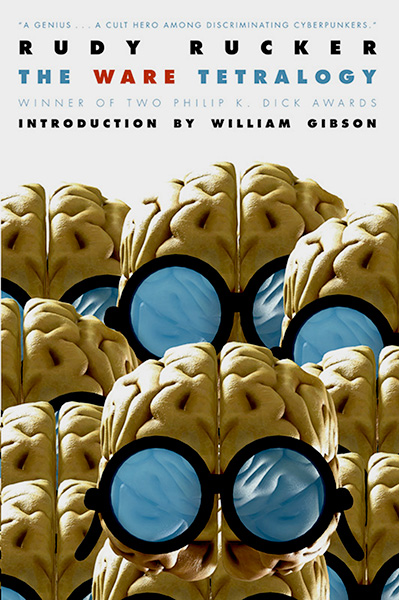
A series of four science fiction novels written by Rudy Rucker : Software, Wetware, Freeware and Realware . They tell about a race of robots, completely artificial androids, called boppers, who rebelled and founded a colony on the moon so that organic life forms would disturb them as little as possible. In the end, they are trying to colonize the Earth using biomechanical cyborgs with organic bodies, which are called meatbops. Quite expectedly, people began to resist it with the help of a special weapon (chipmold), which was intended to destroy cyborgs, but instead suddenly created biomechanical symbiotes, which were called moldies. They looked like large soft plastic larvae. In the end, moldi were built into the human community, becoming a kind of "children from a mixed marriage" of people and robots still living on the moon.
Rucker created a rather complex multi-level system of relationships between all three groups of creatures. People and cars do not just confront each other: the author has built a living and changing ecosystem. People created intelligent robots, and they, in turn, also became the creators of a new life form, just like humans.
House of Suns
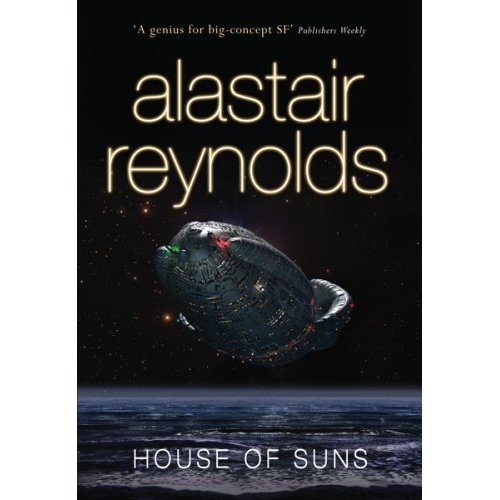
Fantastic novel by Alastair Reynolds ( Alastair Reynolds ). The novel is set in the future after 6 million years, in the universe described in the story by the same author Thousandth Night. Since they did not invent the superluminal way of moving in space, space empires did not arise. However, on different planets there are separate colonies of people and androids. At first glance, they live peacefully. The mechanical race is called Machine People. At the same time, there is a group of ancient Machine People, who are called First Machines. Once they were persecuted by people and were forced to leave the galaxy in search of new knowledge and technology. Since then, they have been divided into colonies and continuously travel, supporting the population by cloning the founder of the colony.
It seems to me very romantic and noble the very idea of wandering through space of separate colonies that collect and spread knowledge. The very fact of having a common goal, the “meaning of life”, if you will, which the robots have chosen for themselves, is captivating.
The Hyperion Cantos (Hyperion Song)

The general name for the series of science fiction novels by writer Dan Simmons (Dan Simmons): Hyperion, The Fall of Hyperion, Endymion, The Rise of Endymion , as well as a series of short stories. The plot revolves around, hmm, the "race" of artificial intelligence TechnoCore. Representatives of this "race" are out of control of people and live in hidden computer networks and underground computers. In fact, these are some programs that consider themselves to be a form of life. The story begins with the fact that TechnoCore pretended to help people with a government consultation, but their goal was to create a Global Mind. And maybe the destruction of humanity, depending on which faction within TechnoCore will prevail.
Personally, I think that the very idea of the existence of “rational" programs, which are even capable of choosing a place of residence, is quite insane. Today, our understanding of artificial intelligence is inseparable from the most powerful supercomputers, the level of technical development so far allows us to hope for the creation of AI only in the form of a unique software and hardware complex. Therefore, despite the many advantages of the Hyperion series, for me TechnoCore stand somewhere between unicorns and traveling through space-time tunnels.
Cyberiada
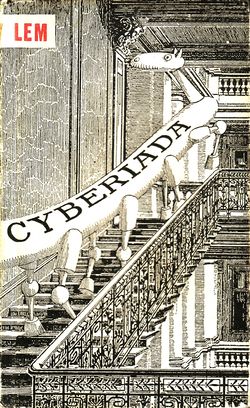
A series of romantic stories by Stanislaw Lem, in which the action takes place in the pseudo-medieval era, inhabited by intelligent machines. At the same time, people exist in parallel, but do not see what is happening next to them. In general, robots from "Cyberiad" have an anthropomorphic appearance, but at the same time caricature-grotesque:
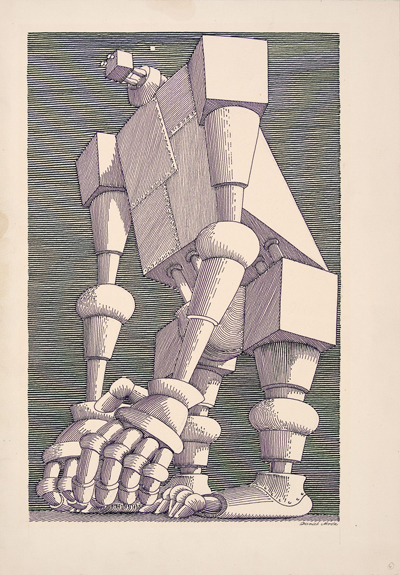
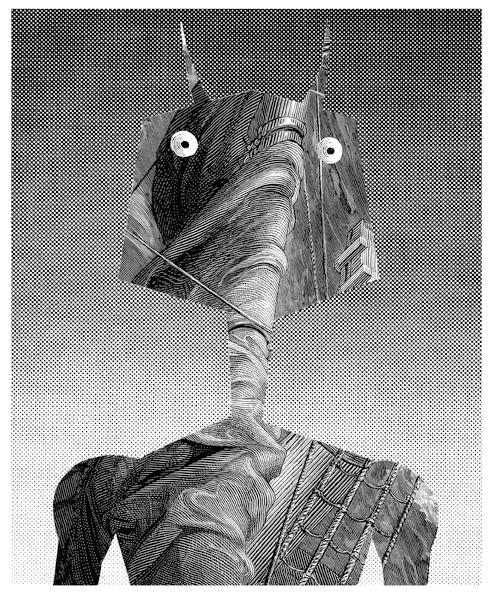

Perhaps “Kiberiadu” can not be attributed to science fiction. This is a kind of collection of fairy tales with an unusual entourage. And not just fairy tales, but with a philosophical bias. Actually, this remark is true for all the work of Lem.
Man Plus (Man Plus) and Mars Plus (Mars Plus)

Two books by science fiction master Frederik Paul (Frederik Pohl). They talk about artificial intelligence that lives in a computer network, which manipulates information in order for the first controlled flight to Mars to be carried out. Cyborg participates in the expedition, thanks to which artificial intelligence also has the opportunity to go to Mars for the sake of ensuring the safety of mankind and himself. Perhaps the author best describes the appearance of this cyborg:
“Outwardly he was a monster.
Red, luminous facet hemispheres instead of eyes, nostrils hiding in skin folds, like a mole snout with a nasal asterisk. Artificial leather was the color of a natural, deep tan, but in appearance it resembled rhino skin. Outwardly, from the person he was born into, nothing was left. Eyes, ears, lungs, nose, mouth, circulatory system, sensory organs, heart, skin - everything was replaced or improved. But the changes, striking the eye, were only the tip of the iceberg. What was done inside was much more complex, and much more important. In fact, it was created anew, for the sole purpose - to live on the surface of the planet Mars without external life support systems. ”
A rather rare example of a human-friendly artificial intelligence story. Moreover, protecting it, and not passively expecting some kind of danger, but acting on anticipation. True, the AI sends its "agent" kayborga to Mars, not only for the sake of protecting people, but also to protect themselves. Thus, his “instinct” of self-preservation, one of the most important features characteristic of living beings, manifests itself.
The author's view on a number of problems is also interesting: the creation of a cyborg with an artificial body, the sequential distancing of the human mind from the mechanical shell, the influence of the body on the consciousness and actions of the cyborg, on its relationship with the former wife.
Code of the Lifemaker (Code of the Creator of Life)
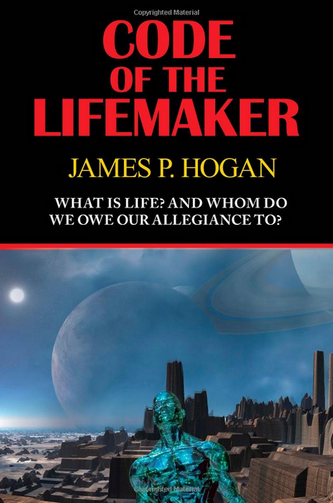
This book , written by James Hogan, tells about the crash of an alien spacecraft on Titan, which produces self-replicating mechanisms, and as a result, a peculiar form of life arises. Robots have an anthropomorphic appearance and have an intelligence similar to human. They create a civilization similar to one of the earliest human civilizations, even with the beginnings of religion, in which the Creator of Life is the deity. People discover robots and try to use them to their own advantage.
In all the other books about artificial intelligence known to me, robots have always been opposed to people as more rational beings. Given the extraterrestrial origin of the ship, an analogy to the theory of the extraterrestrial origin of life itself on our planet suggests itself. And human relationships and roboras transparently hints at numerous facts from human history from the time of great geographical discoveries, at the clashes of European civilization with the Incas and North American Indians.
Diaspora
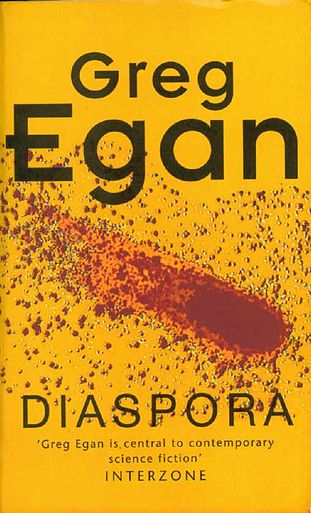
In this story of Greg Egan, the descendants of people are divided into three groups: people (fleshers), robots with the human mind (Gleisner robots) and policies (polises) - supercomputers equipped with artificial intelligence and the human mind. These three groups lived on their own until random mutations disturbed the balance.
The flashers include both “real” people and those created using bioengineering. They boast longevity, resistance to disease and the ability to mutate to adapt to the environment. Glaisners spend most of their time in outer space or on the moon, distancing themselves from both humanoids and polis. In fact, after leaving Earth, robots are harboring the idea of colonization of other planets. Policies "live" in various virtual worlds. They can be compared with the characters that are played by millions of MMORPG lovers, only those who have come alive. A rather curious idea - avatars living by themselves in such future WoW or Lineage. However, policies do not lose touch with the outside world and are aware of many events. In general, this is a very strange world inhabited by representatives of the three "aggregative states" of man.
I, Robot (Me, Robot)
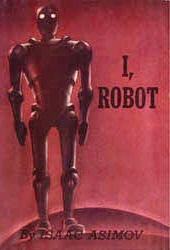
In fact, the well-known eponymous film with Will Smith in the title role only approximately reflects part of the book of Isaac Asimov. This is a collection of nine stories, united by common characters. At the end of the book, all the robots are taken to Lake Michigan, where they may have created their own civilization. In one of the stories of the collection, " Round dance ", Azimov first formulated his three laws of robotics . Actually, the robots in these stories are also anthropomorphic.
Given the decent "age" of the stories, some of them are perceived by several ... vintage. However, their value lies precisely in the fact that they raise simple and at the same time the most important questions of the rules of the road for robots. And the relevance of the Three Laws, as well as their enforcement, will grow in the future along with the progress in the creation of artificial intelligence.
Neuromancer (Neuromancer)

The book by William Gibson tells about artificial intelligence that does not want to enslave or destroy humanity, but intend to leave cyberspace. This book has received a number of prestigious literary awards and is considered one of the best in the cyberpunk genre.
A very interesting work, in which cyberspace, artificial intelligence, bioengineering and network technologies are interwoven. With this book, Gibson introduced to the mass consciousness such a natural concept today as virtual reality. The scope of the plot is simply epic: drug addicts, international corporations, top-secret objects, orbital stations, artificial intelligence in the human body - in general, must read for any fan of science fiction!
Eve no Jikan (Eve's Time)

Beautiful six-part anime series , later released as a feature film. In the near future, androids, almost indistinguishable from people, will become quite commonplace. Their place in human society is mainly reduced to the role of personal and family servants. One day, the main character discovers that his family android in his spare time acts on his own. Spying on her led to a strange cafe in which people and androids are equal. Moreover, in this cafe, androids may not inform others about who they are. So the main character learns that androids are self-aware and able to "feel."
Jonny Walker Advertising
Finally, I want to mention a wonderful commercial in which the android is depicted, which dreams of becoming a man. Just a very beautiful and stylish advertising with great video and fascinating music.
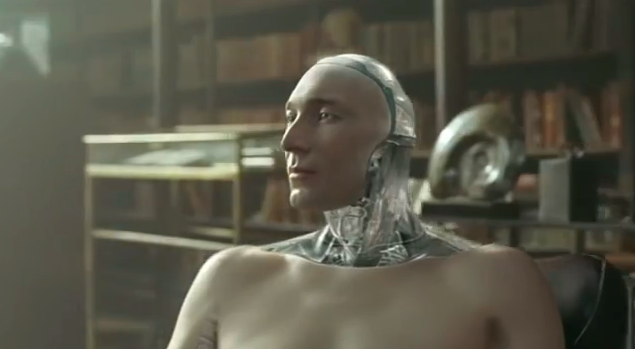
Classifier
The variety of all the above artificial forms can be divided into the following classes:
Robots They are fully mechanical structures in which artificial intelligence is embedded. Outwardly, they can remotely remind people, but they may not even try to do it. They can move independently and lack organic components.
Androids . The same robots, but looking as close as possible to humans. I must say that this “maximum similarity” is different for each author.
Cyborgs . The symbiosis of humans and robots, in which the percentage ratio of biological and artificial varies from a robot with a “loaded” human mind to a human body under the control of artificial intelligence. Intermediate options - a myriad.
Incorporeal artificial intelligence . Actually, "smart" programs, whose habitat are supercomputers and computer networks. In some cases, seeking the opportunity to move into an artificial or biological body, actually turning into a robot.
Honestly, I do not believe that the first full-fledged artificial intelligence will be created in my life. The colossal complexity of this task, both from a technical and from algorithmic points of view, does not inspire me with optimism. Perhaps the breakthrough will come from advances in other areas, such as quantum computers. But to dream of castles in the air is always nice.
As I already mentioned, additions to this list are welcome. Just do not forget: no stories about the wars of robots or the global artificial intelligence, as well as stories in which all people died and only cars remained.
Source: https://habr.com/ru/post/198250/
All Articles